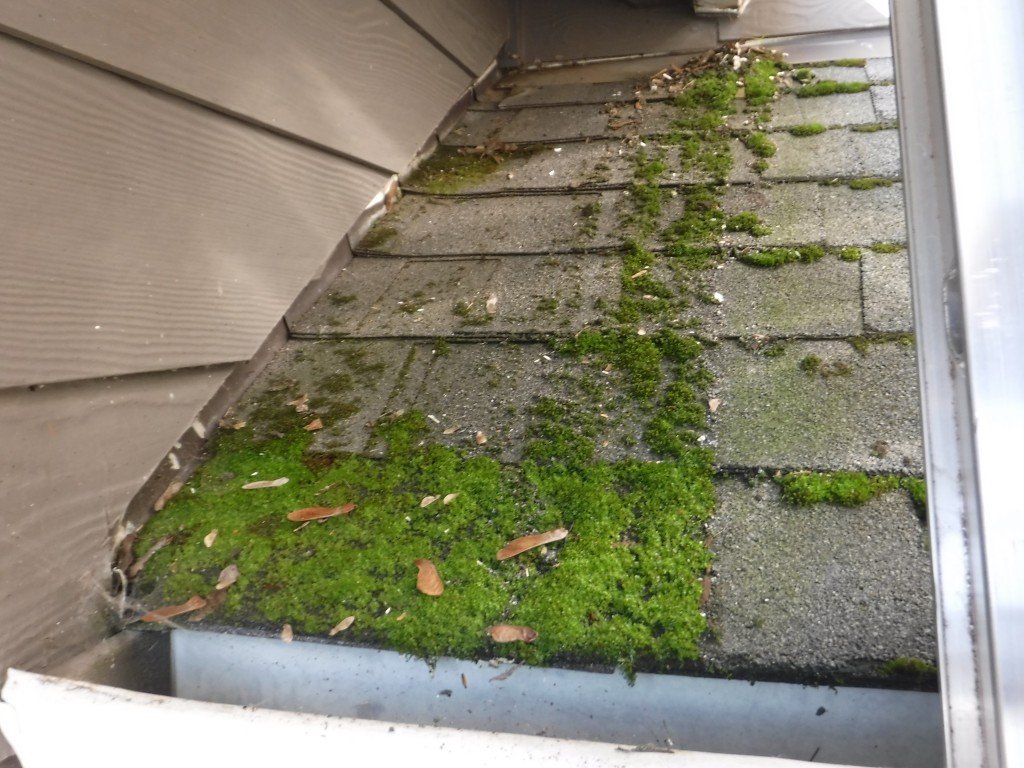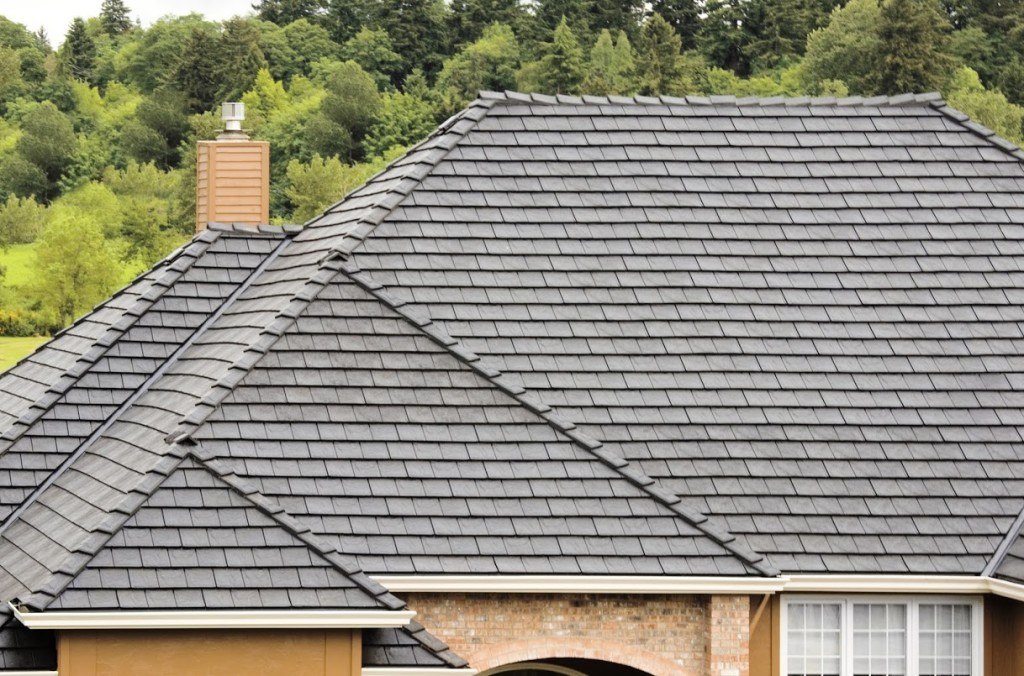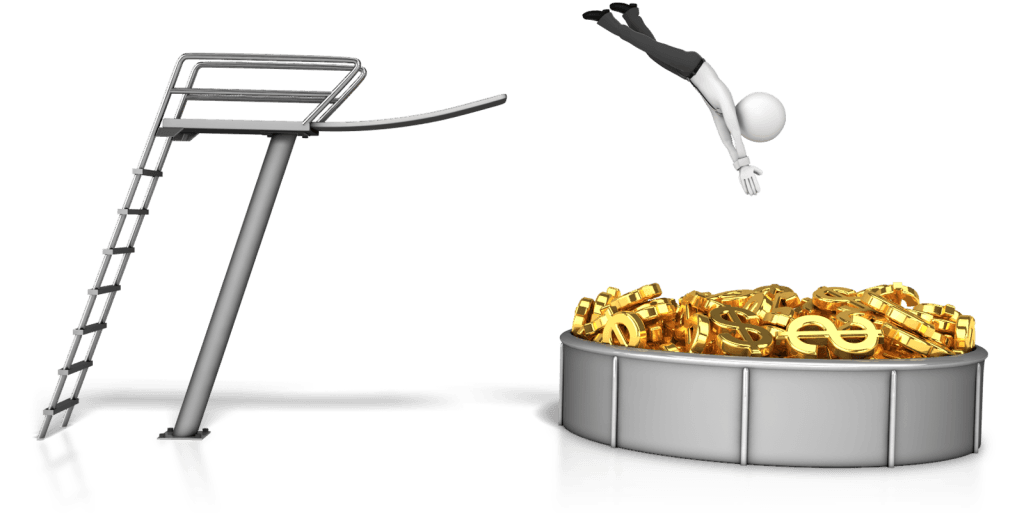Many Home Owners do not realize that you must keep your roof clean to maintain the manufacturers shingle warranty. Depending on the tree cover you should look at getting it cleaned at least every year and maybe more with heavy tree cover. A simple treatment should be enough to get through the year.
Category: Maintenance/Repair
We’re no strangers to storms and rainfall in Portland and the rest of Oregon, especially between the months of November and March.
Much of the time, soft rain showers are welcomed and feed our lush vegetation, but it’s not so nice when you start to find puddles indoors!
Stormy weather is often when roof leaks get noticed. Often by then, it’s too late to for prevention—there’s no more time to plan, you need help immediately.
You may not need to completely replace your roof: it could be a simple problem with a simple solution. Condensation from an improperly ventilated roof, for example, can make it look like your roof is leaking, even it’s just a few droplets of water leaking through your ceiling.
So what do you do if you see a leak?
Is it an emergency?
A small leak can let in a little water during rainfall, but this could evaporate quickly and the leak can go undetected for years.
But weeklong showers or a heavy storm can suddenly turn a small leak into a big emergency.
When you get a leak, water will pool and eventually start seeping out through whatever single point of exit it finds, like a light fixture or ceiling joint. And then it will find more escape routes, sometimes making it seem like it’s a far bigger problem than it really is.
Find out why your roof leaking
A lot of the time, leaks are caused by common roofing issues, like holes, gaps, damaged shingles, split flashings, or poor workmanship.
Even with a really solid roof, roofing materials can get overwhelmed with large volumes of water. Cracked, worn or missing shingles or other roofing materials may not be completely waterproof and can let water in.
Over time, a damaged underlay under tiles and slates can fail and also start letting in water. The same can happen for gutters and valleys.
Another weak point are flashing junctions of the roof: when these get damaged or are poorly installed, water can pool and result in a leak.
Or—a more serious issue—the pitch installation of your roof may not be optimal for our wet and snowy Oregon winters.
The roof is leaking NOW—what do I do?
1. Minimize damage inside your house
You’ve seen the leak, and water is seeping in. What do you do?
- Quickly remove anything that can get damaged, like computers, curtains, lights, and decorative items.
- Unplug anything electric near the leak and turn off the power to the area.
- Move furniture away from the leak, or if the items are too heavy to move, cover them with a plastic tarp or trash bags.
2. Find the source of the leak
Warning: Don’t go outside or on your roof during a storm to find the source of a leak. You won’t be able to fix anything until the end of the storm anyway, and you may only be exposing yourself to danger.
- It can be tricky to find the source of the leak yourself: water will travel and find the easiest escape route, and the source of the leak might not line up with the pool of water.
- If you can’t find it, don’t panic, call a roofing professional.
- Start with the inside: Go up to your attic and look for the pool of water. If you find it, sponge off any pooled water.
- If there’s no water leak coming in from the attic, look for the bulge in the ceiling or the wettest spot of the wall where you first spotted the leak.
3. Drain and protect
- Go to the bulge in the drywall and use a screwdriver to poke a hole in it to relieve pressure on the roof and ceiling.
- The water will drain out.
- Place a bucket directly under the hole to catch the draining water.
4. Stay calm and call your roofing contractor
- Call a reputable local roofing company. Remember that the repairs they make will have to last, so call a roofing company with experience.
- Repairs have to wait until the storm has stopped—but your roofing company will be able to place emergency tarping to cover the surface of the damaged area.
- When the weather has calmed, they’ll inspect your roof from the interior and exterior to trace the source of the leak and start repairs.
Prevention is half the cure
- Remember that the best way to avoid an emergency is to catch the issue as soon as you have warning signals.
- If you see a stain on your ceiling, don’t ignore it: get it fixed. By the time you notice real damage, it might be too late.
- We recommend you inspect your roof once or twice a year, in spring and fall.
- Use our checklist for guidance. And if you’re not sure where to start, give us a call and we’ll conduct a thorough inspection and help prevent water leaks and damages.
Keith Green Construction knows how stressful it can be to have a leak in your roof. We’ll come out to you as soon as possible to repair your roof.
You may have heard the famous Benjamin Franklin quote, “A small leak will sink a great ship”, and it’s the same for your house. Leaking roofs can cause havoc in your home and destroy your furniture.
If you’re lucky, you’ll have spotted damaged or missing shingles or tiles, or noticed water marks on the ceiling long before water makes its way through your roof and into your home.
Regardless of the type of roof you have, flat or pitched, at some stage during your roof’s lifetime you’re likely to experience a leak if you don’t annually inspect it.
Fixing the leak isn’t actually the hardest part, but finding it can be! The reason leaks are so hard to find on a roof is because water can seep in from damaged areas on the roof, such as worn or broken shingles or loose nails, and trickle down to another point before it drips down to your ceiling.
If water is seeping into your home, check for roof leaks as soon as you can to prevent further damage. Need an urgent roof repair? Call emergency roof repair professionals available 24/7.
Roof Leaks: the Usual Suspects
Water leaks may not come from the roof itself. Water can seep in from air condition or plumbing leaks, drains or scuppers, or even from pest infestation. Blocked gutters can make it look like the roof is damaged. Before you try taking your roof apart, make sure that’s where the water is actually seeping in from.
Some parts of the roof are more prone to leaks, so start your search there. Flashings at chimneys, air conditions on the roof, skylights, dormer vents and roof protrusions often turn out to be the source of the problem.
If you want to avoid making an emergency call to roofing specialists, safeguard your roof with regular roof maintenance and inspections.
Finding the Leak
Step 1: A Visual Inspection of the Roof
Standing on the ground, start by looking for the obvious roof leak. Look for:
• exposed roofing tacks
• cracked asphalt or shakes
• ice dams
• broken or damaged shingles
• water stains or discolorations
• holes
• popped nails
• fallen branches
Many of these can be easily fixed, like replacing a shingle, but if you see uneven ridge lines or sagging rafters, this could be a more serious structural problem, and you’ll need to call in the professionals.
Step 2: Checking the Attic for Roof Leaks
If you had no luck with the visual inspection, examine the attic, if you have access to it. Look for wet frames, soft spots or water marks, and examine the ridge, sheathing and rafters. Water flows downhill, so work your way up if you see a drip.
If nothing turns up, switch off the lights and look for holes that let the daylight through.
Lastly, examine the underside of the roof nails that are badly placed in the framing member, causing condensation and frost in cold weather.
If you find a hole, gently run a bit of wire through so you can find it easily from the roof.
Step 3: Getting the Ladder Out: Up on the Roof
The attic didn’t yield any results? You may have to check the roof itself.
Walking on the roof or standing on the eaves can cause damage and can be very dangerous. If you’re not comfortable going up on the roof, or if you don’t have the right equipment, call the roofing contractors – it’s no small task, and sometimes it takes professionals to do it right – and do it safely!
First, look for corrosion or broken seals on the flashings of anything that protrudes through the roof, such as vents, chimneys or skylights. Next, check the whole surface of the roof with binoculars for holes, rusted areas, worn or loose shingles or dry rot.
If you fail to uncover the leak, there is one more thing you can try before you call in the professionals: a water test with a garden hose.
Slowly, isolate and soak one small area of the roof at a time while a friend looks for the leak in the attic. Start at the bottom of the roof (never go straight up-roof), one small area at a time. If you find the leak, push a wire or nail through so you can identify the area on the roof.
Step 4: Fixing the Leak in your Roof
Now that you’ve found the leak, you’re halfway to staying dry! How you fix the leak will depend on the material and construction of your roof.
Single roofs can often be easier to fix, by replacing or securing curled or missing/damaged shingles. Flat roofs that have a large area of water under the roof will require a professional to fix the problem. If you’re not sure how to proceed, call a professional roofing company who can fix emergency roof repairs and ensure your roof – and your whole home – stay dry!
A Word about Safety
You should never climb onto a roof during a storm, and never on a steeply pitched roof. Ladders can be dangerous and need to be set up properly. You should always wear a safety line and harness if you’re climbing onto a roof or up a ladder. Never work from the ladder – set up a scaffold that will provide a safer platform. Gloves and goggles are recommended for the attic. Avoid stepping on ceiling joins or other delicate surfaces and be careful of any wet plastic. Attics can contain badly insulated electric wires –stay away from these and call an electrician or professional roofer if any are exposed.
Annual Inspections of your Roof
Roofs are the first level of protection for your home, and they need some TLC, too. Did you know that you can have your roof inspected and maintained annually? Before winter, consider hiring experts to examine your roof and provide improvements to add years to your roof!
ou may have heard the saying, “The time to repair the roof is when the sun is shining.” This is a sound decision if you’re a homeowner and you want to minimize home improvement costs, especially when it comes to replacing or repairing your roof.
Throughout the year, your roof protects you against the elements and is constantly expanding and contracting, drying up and cracking. With time, it’s normal that your roof deteriorates. If the roof is in need of repair, the line of defense of your home is broken. A faulty roof could lead to damage to your ceiling, walls, insulation, electrical wiring, floors, furniture and more.
10 things to look for during your roof inspection
So how do you know if it’s time to have your roof repaired or replaced?
First, walk around your home and closely examine the roof for obvious signs of damage, leaks, or aging. You can use binoculars to examine it more carefully. Some people climb onto their roofs for the annual inspection, but it’s best to leave climbing to professionals, who can access your roof safely.
[Not sure how to inspect your roof? Get a pro to do it for you]
Inspect the roof for:
- Torn, loose, damaged (or missing!) shingles, shakes or tiles
- Shingles that curl up or are cracked
- Granules from shingles or pieces of roofing materials in the gutters
- Dark areas or signs of water damage visible on the roof surface
- Gutters that droop or are blocked
- Water leaking from the gutter or the pipe
- Signs of mold or moisture
- Bird nests or signs of vermin infestation
- Plant shoots on the roof or in the gutters
- Dark spots or water stains on ceilings inside the house*
Deciding on whether to repair or replace your roof
Now that you’ve taken note of the condition of your roof, you’ll have to decide if you need to repair your roof or replace it entirely. There are costs to consider with either decision.
Many homeowners choose to repair individual damaged shingles, slates or tiles to extend the life of the roof. The downside is that new shingles may not match the color of your current shingles, and you could lose some curb appeal. Ask your contractor to match the shingles as closely as possible if you are choosing to patch up your roof. If parts of the roof need repair, there’s a good chance that it won’t be long until you’ll have to repair (or replace) the rest, too.
It may work out cheaper in the long term to reroof with durable and sustainable roofing products that will last you a dozen years or more than to patch up bits and pieces over the years. Your roofing contractor will be able to help you to make that decision.
Investing in your roof is certainly an expense, but consider the peace of mind you’ll have from knowing that your roof is strong enough to protect your home and family from harshness of the elements.
When to call in the pros
If you have never inspected your roof for damage, or you see signs of impending leaks, cracks, or wear-and-tear, contact a professional roofing contractor. That single phone call or email could save you thousands before the next big storm hits!
*Source: https://brightnest.com/todos/inspect-your-roof

If you are like most people, your home is one of your biggest assets. Maintaining and renovating your home makes living in it a pleasure. And if you play your cards right, your home improvements will also be reflected in the value of your home when it is time to sell. The challenge is to know where to spend your dollars.
There are several types of remodeling projects that will give you more bang for your buck. Not only will you love the results for yourself, you’ll also recover much of your investment at resale time. According to Henley Wood’s 2014 Costs vs. Value survey data for people living in Portland, Oregon, you should consider the following home improvements to maximize your return on investment and increase the value of your home.
Curb Appeal
A good first impression can definitely boost the value of your home. For instance, according to the survey’s Portland, Oregon data, when you sell your home you can expect to recover:
- More than 90% of the cost of replacing either your entry door or your garage door.
- More than 81% of the cost of replacing your windows.
Also consider re-paving your walkway or driveway for an immediate lift, as well as some low-cost cosmetic landscaping.
Basement renovation
How much use are you making of your basement? Invest in remodeling your basement, and you can recover 86% of the costs at resale. Consider proper insulation, drywall and a coat of paint to brighten up the space.
Then, why not transform your basement into a media room, or even a man cave? Remember that adding a bathroom to the basement can significantly boost the value of your basement remodel. This is especially true if you have a separate entry point to your basement, which presents rental income possibilities for future buyers.
Upgrade Kitchens
Our kitchens are the heart of our homes, and where we tend to spend most of our family time. A beautiful upgrade to you kitchen will enhance all of those treasured family moments. The great news is that a kitchen remodel is also likely to significantly boost the value of your home.
According to the survey, if you live in Portland, Oregon, you are likely to recover 78%-82% of your mid-range kitchen remodeling investment at re-sale.
Upgrade Bathrooms
How many of us have inherited dated bathrooms with cheap or even chipped bathroom fixtures? According to the survey, if you remodel your bathroom, you can recoup more than 75% of your investment at sale time.
Consider better lighting, replacing your fixtures, and introducing his and her sinks. Cramped for space? Try adding storage space with a recessed vanity. You may also want to consider some extra perks like a whirlpool tub, steam shower, or heated floors.
Build a Deck or Patio
Building a new deck or patio is a great way to take advantage of those wonderful, summer days. It’s also a great way to increase the value of your home. According to the survey, if you live in Portland, Oregon and build a deck or patio, you can expect to recover 68% to 79% of your investment at sale time.
Keeping Your Home in Top Shape
One of the best ways to reduce the value of your home is not to properly maintain it, so that it deteriorates over time. A leaky roof, for example, can cause extensive damage to the inside of your home. Replacing your roof is a great way to preserve the value of your home and you can expect to recover more than 72% of your investment at sale time.
Low-Cost Improvements
Low-cost improvements such as new rugs and a great paint job can go a long way toward improving the appearance of your home. Just be aware that the unusual paint color you love might be a turn off for future buyers, so consider staying away from bold colors.
Now that you have all the facts, why not set up a renovation plan and budget? You can beautify your living space, while you protect your investment. Just be sure to select a reputable contractor you can trust.
Source: Henley Wood’s 2014 Costs vs. Value survey data for people living in Portland, Oregon
There are at least two compelling reasons to invest in renovating your home. Firstly, a beautifully maintained home is a pleasure to live in. And secondly, proper maintenance and strategic upgrades can boost the value of one of your biggest assets, and put more money in your pocket when it is time to sell.
Renovating your home to suit your own tastes is easy. But if you renovate your home with only your own tastes and priorities in mind, you won’t necessarily make your house more appealing to potential buyers in the future.
Here, for example, are some renovation projects that will generally not improve the value of your home:
 Installing a Pool
Installing a Pool
Pools are fun in the summertime, but many prospective home buyers will see a pool as dangerous, a maintenance hassle, and even a potential liability.
 Overextending Beyond Your Neighborhood
Overextending Beyond Your Neighborhood
Sunrooms are beautiful and extension projects are exciting. If your focus is increasing the value of your home for new buyers, however, be aware that making your house the biggest on the block may not be a good idea. Certainly, you are unlikely to recover your investment at sale time. You are more likely to seem overpriced for your neighborhood.
 Overdoing it on Landscaping
Overdoing it on Landscaping
Upgrading your garden is an excellent way to improve your curb appeal. Be wary, though, of spending exorbitant amounts on elaborate landscaping modifications that might not be as appealing to someone else, and which may require extensive maintenance.
Elaborate Lighting
Good use of light and space makes a huge difference to the look of your home. Still, installing ornate lighting – such as expensive chandeliers – may not be a worthwhile investment. What is beautiful to you may not appeal to a future buyer. Rather, keep things clean and simple with track lighting or spotlights that cast a warm glow on your home.
 Wall-to-Wall Carpeting
Wall-to-Wall Carpeting
Wall-to-wall carpeting has fallen largely out of favor. People tend to prefer hardwood floors, and associate wall-to-wall carpets with germs, dust, and allergies. For this reason, the installation of wall-to-wall carpeting is unlikely to provide a strong return on your investment.
Now, perhaps you plan on living many long years in your home, and increasing the value of your house is of secondary importance to you. Maybe you are craving a pool, or another one of the renovation projects listed above, and you just know that it will bring you countless of hours of joy, and build precious memories. If that’s the case, then go for it! Happy family memories are priceless.






